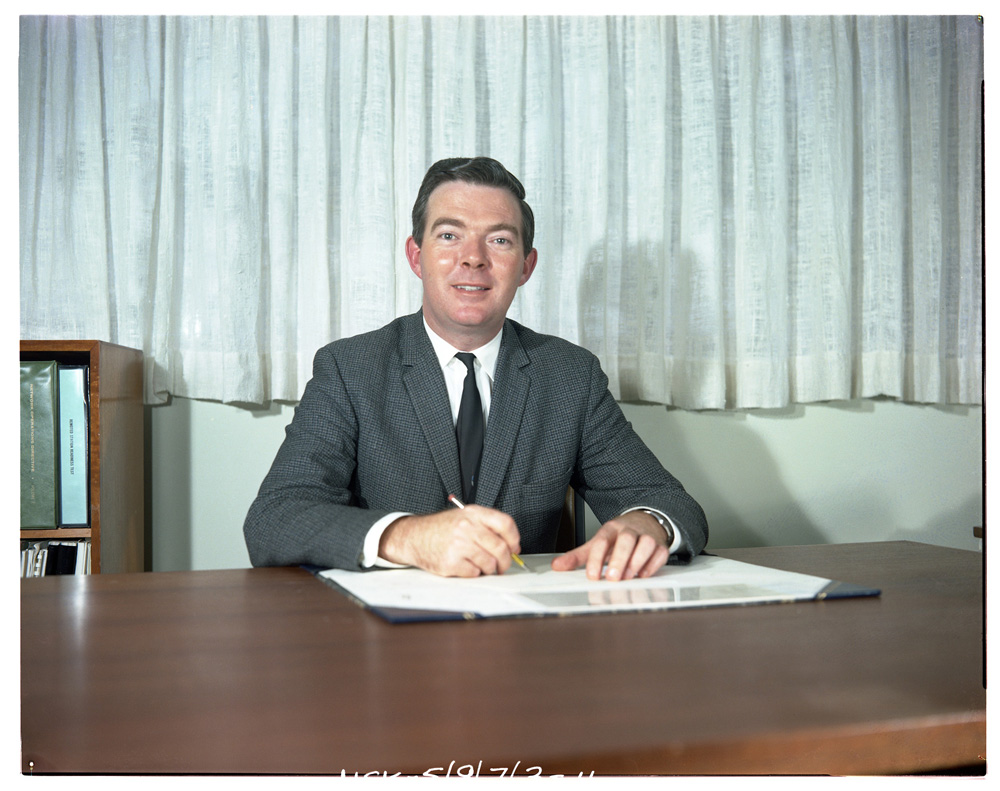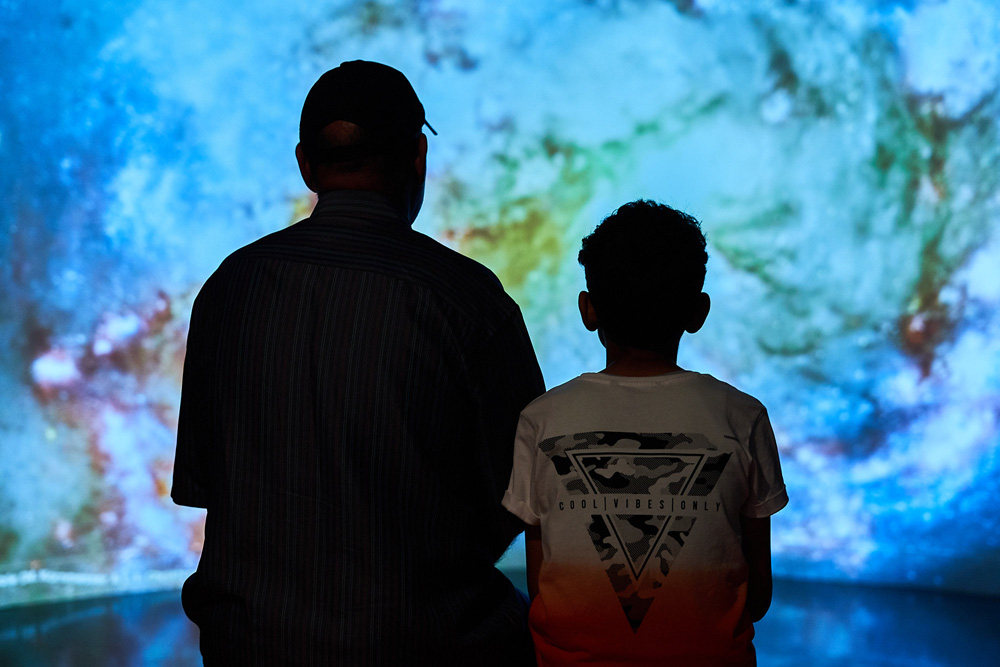To mark the 50th anniversary of the first Moon landing, the National Science and Media Museum hosted a one-off screening of The Dish, followed by a live Q&A with Mike Dinn, the Bradfordian who played a crucial role in transmitting that ‘giant leap’ to television sets across the globe.

The Dish is a comedy drama based loosely on real-life events at Parkes Observatory in Australia. The film tells the somewhat embellished story of its role in transmitting Neil Armstrong’s first steps on the Moon live on television during NASA’s 1969 Apollo 11 mission.
Parkes is the biggest radio telescope in the southern hemisphere. The film’s fictional Australian Prime Minister responds to this fact with the statement: “Then what’s it doing in the middle of a sheep paddock?” Parkes remains a part of NASA missions to this day… and is still in the middle of a sheep paddock.
Mike Dinn was Deputy Director of Operations at Honeysuckle Creek Tracking Station, which held equal, if not more, responsibility in bringing the world those momentous images. Having slept in his clothes, a bleary-eyed Mike joined cinemagoers at 4am Australian time via Skype—a slightly less impressive feat than the Moon transmission, yet similarly not without its hitches.
Mike is a Bradford lad made good. Born and raised in Little Horton, Mike studied Electrical Engineering at Bradford Technical College, now part of the University of Bradford, before emigrating to Australia to work as an engineer in an aircraft flight testing facility. In 1966, now with 6 children, he applied for the role of Deputy Director of Deep Space Tracking at the newly built Canberra Deep Tracking Station, tracking NASA’s unmanned spacecraft.
A year later, Mike assumed the role of Deputy Director of Operations at Honeysuckle Creek Tracking Station, part of NASA’s Manned Spaceflight Network, overseeing Apollo missions 7 to 13.

Mike was at the controls on that historic day, facilitating the transmission of the legendary images that remain impressed in the global consciousness 50 years later. Yet the 85 year-old Bradfordian remains humble about the pivotal role he played:
“It was the highlight of my career. But you could say I happened to be in the right place at the right time. Many other people could have done the same thing.
“The astronauts were scheduled to have a sleep after they landed, but understandably it would have been like being a child at Christmas, so they decided to get out early. Though ‘early’ dragged on a bit—they were getting into their space suits for 2–3 hours!
“Many people think we were clever about coping with that, but in my humble opinion, we weren’t because we were trained and resourced well enough to be expected to cope with anything at any time. When a mission went to plan, we only used about 10% of our capabilities. We only got pressed when coping with the difficulty of Apollo 13—the explosion leading to all sorts of problems.”
Asked if he felt the Moon landing would resonate with as many people as it has if those images had not been captured, Mike replied:
“Almost certainly not, because the interest nowadays is almost solely around visual media, whereas ironically, that was the least of my concerns at the time.”
In The Dish, the fictional director of operations at Parkes, played by Patrick Warburton, says: “I’m still not sure what’s more important to get back safely, the astronauts or the pictures”. For Mike, the answer to this question was never in doubt:
“My biggest priority was transmitting the telemetry signals to the astronauts from their lunar modules and backpacks—vital for their safety—and television was at the bottom of that list.
“As JFK said to us: ‘get our astronauts to the Moon and return them safely’. If anything, televising added an extra element of danger. But despite all the other efforts, this will be the feat that is remembered, and understandably so.”
This special event coincided with the launch of the new exhibition Hello Universe. From early paintings of planets to today’s super-HD photographs of deep space, the exhibition takes you on a journey through the sights and sounds of space. Look out for the segment on Mike Dinn and Honeysuckle Creek in Gallery 1.

For more about how the 1969 Moon landing was broadcast to the world, read our story From the Moon to your living room: the Apollo 11 broadcast.
Hello Universe is open at the National Science and Media Museum until 22 January 2020.